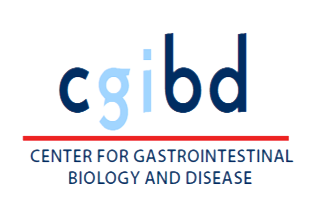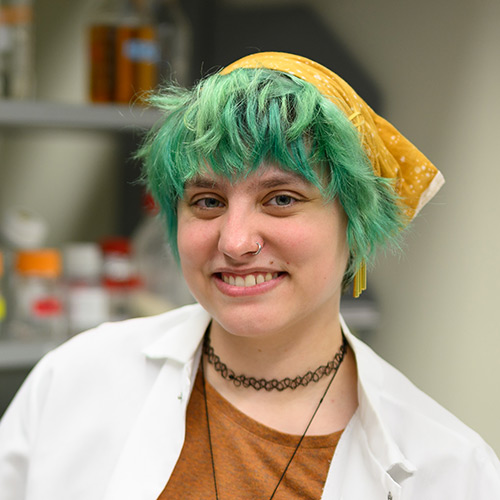Gnotobiotic Animal Core of the Center for Gastrointestinal Biology and Disease
Overview
The Gnotobiotic Animal Core, which maintains germ-free and gnotobiotic rodents, is housed in the Laboratory Animal Resources facility at the College of Veterinary Medicine.
The Center for Gastrointestinal Biology and Disease is funded by NIH to support research in gastrointestinal biology at North Carolina State University and UNC-Chapel Hill.
Core Features
- We provide germ-free and gnotobiotic mice to all investigators
- We employ highly experienced technical staff to conduct complex mouse experiments
- We provide expertise both technical and consultation on study design and implementation
- We assist in IACUC protocol amendment revisions tailored to your experiment
Contact Information
CORE DIRECTOR
Casey M. Theriot, PhD
Professor of Infectious Disease
Email: cmtherio@ncsu.edu
Phone: 919-513-0711
Ready To Plan An Experiment With The Core
1. Please fill out the New Project Request Form through the UNC CGIBD and specify that you want to use the NC State University Gnotobiotic Animal Core.
2. Please email the Core Director Dr. Casey Theriot: cmtherio@ncsu.edu
Sponsors


Purpose
We provide germ-free and gnotobiotic mice and expertise to all investigators whose research focuses on areas such as gastrointestinal biology and disease.
Research Team
Germ Free Strains Available
- C57BL/6J
- 129S6/SvEv WT
- IL-10-/- (129S6/SvEv WT)
Internal/UNC CGIBD Member Rates
| Service Name | Cost Per Unit |
|---|---|
| Germ Free Mice (per mouse) | $45 |
| Port Manipulations: open to bring in bacteria, remove stool samples and to transfer/remove mice | $40 |
| Technical Services (per mouse): ear-notch, gavage, collect stool, transport the transdisk | $8 |
| Consultation Fee, includes IACUC protocol changes (per hour) | $100 |
External Rates
Please inquire with Core Director
Planning Your Project
There are several things to consider when planning your project including the timeline and budget.
General Considerations
- What mouse strain do you need?
- How many mice do you need, what sex should they be, and how old should they be?
- How many isolators will you need?
- Will your mice be microbially colonized, and will the organisms be aerobic, anaerobic, or mixed?
- Does your project require that the mice receive periodic treatments or manipulations (special diet, gavage, stool collection, etc.)?
- If your mice are getting treatments, how is this being done (gavage, in drinking water, etc..), what is the concentration and dose, and how often does it need to happen?
- If gavage is used we either gavage at volumes of 50 uL or 100 uL for each mouse, and gavage should optimally only happen once per day at most to prevent risk of contamination.
- If in drinking water we will need to know both the concentration of the treatment (mg/mL) and how often the water may need to be changed out.
- Please keep in mind for any treatment it will need to be sterilized somehow to prevent contamination of the mice (even if the mice are already gnotobiotic).
- Do you need the mice when the experiment is finished, either for necropsy or some other reason?
- You can either pick up the mice for transport yourself – please note that transportation of live mice may require certain approvals from your own institution.
- We provide transportation of the mice, but there will be an additional fee.
- Is there any flexibility in any of the above questions?
Timeline Considerations
- What is the availability of the mouse strain needed for your project?
- What is the availability of the isolator space?
- This is dependent on the number of isolators, and the length of time needed to complete your project.
- Do any included treatments or compounds need to be added to our IACUC protocol?
- This can take an extra 2-3 weeks, conservatively, to get everything approved, and you will need to provide the following information on your treatment for the IACUC amendment.
- Route of administration, concentration, and dose of treatment
- If it is a chemical and has an SDS form that should be provided
- Any toxicity information for either mice or humans
- This can take an extra 2-3 weeks, conservatively, to get everything approved, and you will need to provide the following information on your treatment for the IACUC amendment.
- How long, in either days or weeks, should your experiment take?
- It is recommended that experiment timelines be minimized as much as possible because contamination is more likely the longer and experiment goes on.
- Is the timeline realistic for the things that you have to provide?
- You must be able to get us the treatments or any other supplies that you are providing for your experiment by the start date of the experiment, or you will be charged a cancellation fee.
Budget Considerations
- Please refer to our price list on the product and services page when preparing your budget. New rates will be coming soon.
- Cancellation fees can be accrued if you are not ready to provide us with the necessary items when the project is scheduled to start. Please make sure you are ready with everything before planning.
Gnotobiotic Experimental Design
There are special issues you need to consider when planning gnotobiotic experiments beyond that of normal scientific design.
Number of Isolators
Each study, or selective colonization, will need to be house in separate isolators since the transfer of microbes can occur between cages within an isolator. Our large isolators can house up to 12 cages of mice, and our small isolators can house up to 3 cages of mice. It is possible to house several different mouse strains in the same isolator as long as they are colonized with the same microbes.
Constraints on Numbers
We are not a commercial breeder and do not have large numbers of gnotobiotic mice of the same age and sex at any given time. It may be pertinent to be somewhat flexible on age and sex to ensure proper numbers for your experiment. If you are not flexible or want a large number of mice, it can be done with careful planning, months of lead time, and extra fees.
Keep it Simple
The reality of gnotobiotic experiments is that they are difficult in isolators with bulky gloves that limit dexterity, higher chances of contamination, and that are expensive to maintain. Therefore, we recommend the use of no more than 3 concurrent isolators, low numbers of mice for the study, and relatively simple manipulations that only require a breach of the isolator at most once daily.
Educational Resources
Laboratory Animal Research Organizations



Books
- Gnotobiotics (American College of Laboratory Animal Medicine) by Trenton R. Schoeb (Editor), Kathryn A. Eaton (Editor)
- Gnotobiotic Mouse Technology by Chriss J. Vowles (Author), Natalie e. Anderson (Author), Kathryn A. Eaton (Author)
- The Gut Microbiome in Health and Disease by Dirk Haller (Editor)
- Fundamentals of Microbiome Science: How Microbes Shape Animal Biology by Angela E. Douglas Author)
- The Human Microbiota in Health and Disease: An Ecological and Community-based Approach by Michael Wilson (Author)



